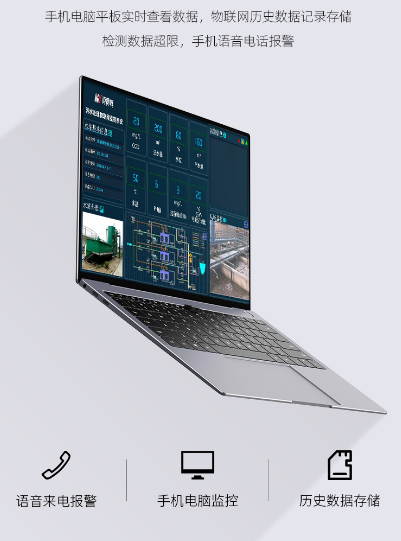Summer Selection of Residual Chlorine Water Quality Monitors: Is the Real - time Monitoring Function a
In summer, a water treatment plant experienced a 1 - hour delay in data from its residual chlorine monitor. As a result, the residual chlorine content in the water at the end of the pipeline network was too low, and the bacteria exceeded the standard, which led to complaints from residents. Another swimming pool had an outbreak of skin infections because the sudden drop in residual chlorine was not detected in time. These cases all point to a core issue: residual chlorine changes rapidly in summer, and the real - time monitoring function is not just a "bonus" but a "must - have". Now, let's have a detailed explanation from Madeishi, a chlorine sensor Manufacturer of residual chlorine water quality monitors.
Three Reasons for the "Capricious" Residual Chlorine in Summer, Urging Real - time Monitoring
1. Increased water temperature accelerates residual chlorine consumption**: In summer, the water temperature is 5 - 10℃ higher than in spring and autumn. The chemical reaction rate of residual chlorine (especially free chlorine) speeds up, and the consumption rate increases by more than 30%. The residual chlorine that meets the standard in the morning may fall below the safety value in the afternoon.
2. Surge in water demand causes large fluctuations**: In summer, the water consumption of residents and enterprises doubles. The water replenishment volume of water treatment plants and swimming pools increases sharply, and the residual chlorine is easily diluted by the new water. If real - time monitoring is not carried out, the adjustment of chlorine dosage lags behind, and it is very easy to cause the residual chlorine to exceed or be insufficient.
3. Microbial reproduction "forces" fluctuations in residual chlorine**: High temperatures accelerate the reproduction of bacteria and algae in the water, which consume a large amount of residual chlorine. There may be "sudden drops in local residual chlorine" (such as in dead ends of the pipeline network or corners of the swimming pool), which traditional regular monitoring simply cannot capture.

Three Scenarios Where the Real - time Monitoring Function of the Online Residual Chlorine Detector Helps Enterprises "Avoid Pitfalls"
1. Water treatment plants/secondary water supply : The real - time data from the Digital residual chlorine sensor is linked with the chlorine - adding equipment. When the residual chlorine is lower than 0.05mg/L, the chlorine - adding pump is automatically started to prevent the growth of bacteria in the pipeline network (the national standard requires that the residual chlorine in the terminal water should be ≥0.05mg/L) and reduce water quality complaints.
2. Swimming pools/water parks : In summer, there are many tourists, and sweat and skin care products consume residual chlorine. Real - time monitoring can immediately give an alarm when the residual chlorine is lower than 1.0mg/L, and chlorine can be added in time to avoid cross - infections such as pink eye and dermatitis.
3 Food processing enterprises : High precision of residual chlorine is required in the cleaning and disinfection processes (for example, slaughterhouses need residual chlorine of 0.5 - 1.0mg/L). Real - time monitoring can prevent equipment corrosion due to excessive residual chlorine or incomplete disinfection due to insufficient residual chlorine.

How to Judge Whether the "Real - time Monitoring" of the Online Water Quality Monitor is Really "Reliable"?
1. Check the data update frequency: High - quality instruments update data every 1 - 3 seconds. It is advisable to be cautious when choosing instruments with a lag of more than 10 seconds (as they cannot capture rapid changes).
2. Examine the linkage response speed : When linked with the chlorine - adding system, the delay from the moment the data exceeds the standard to the start of the equipment should be less than 30 seconds; otherwise, it will not play an emergency role.

3. Test the stability under extreme conditions: High temperatures and strong light in summer may interfere with the sensor. It is necessary to choose instruments with temperature compensation and anti - light interference functions to ensure accurate data.

Residual chlorine in summer is like a "naughty child", changing rapidly and being difficult to predict. The real - time monitoring function of the online residual chlorine detector can help enterprises "closely monitor" the changes in residual chlorine and adjust the chlorine - adding strategy in time. This not only maintains the safety baseline but also avoids waste of cost due to excessive chlorine addition. This is the core reason why enterprises must value it in summer. If you are also troubled by water quality monitoring problems, welcome to consult Madeishi, a residual chlorine water quality sensor manufacturer, at any time!
Previous: Keep Failing at Summer Disinfection? The Online Residual Chlorine Detector Tells You If Disinfection Is Adequate
Next: Is the Residual Chlorine in Your Waterworks Not Up to Standard in Summer? Stop Using Spring's Old Methods! The Online Residual Chlorine Detector Is the Key

